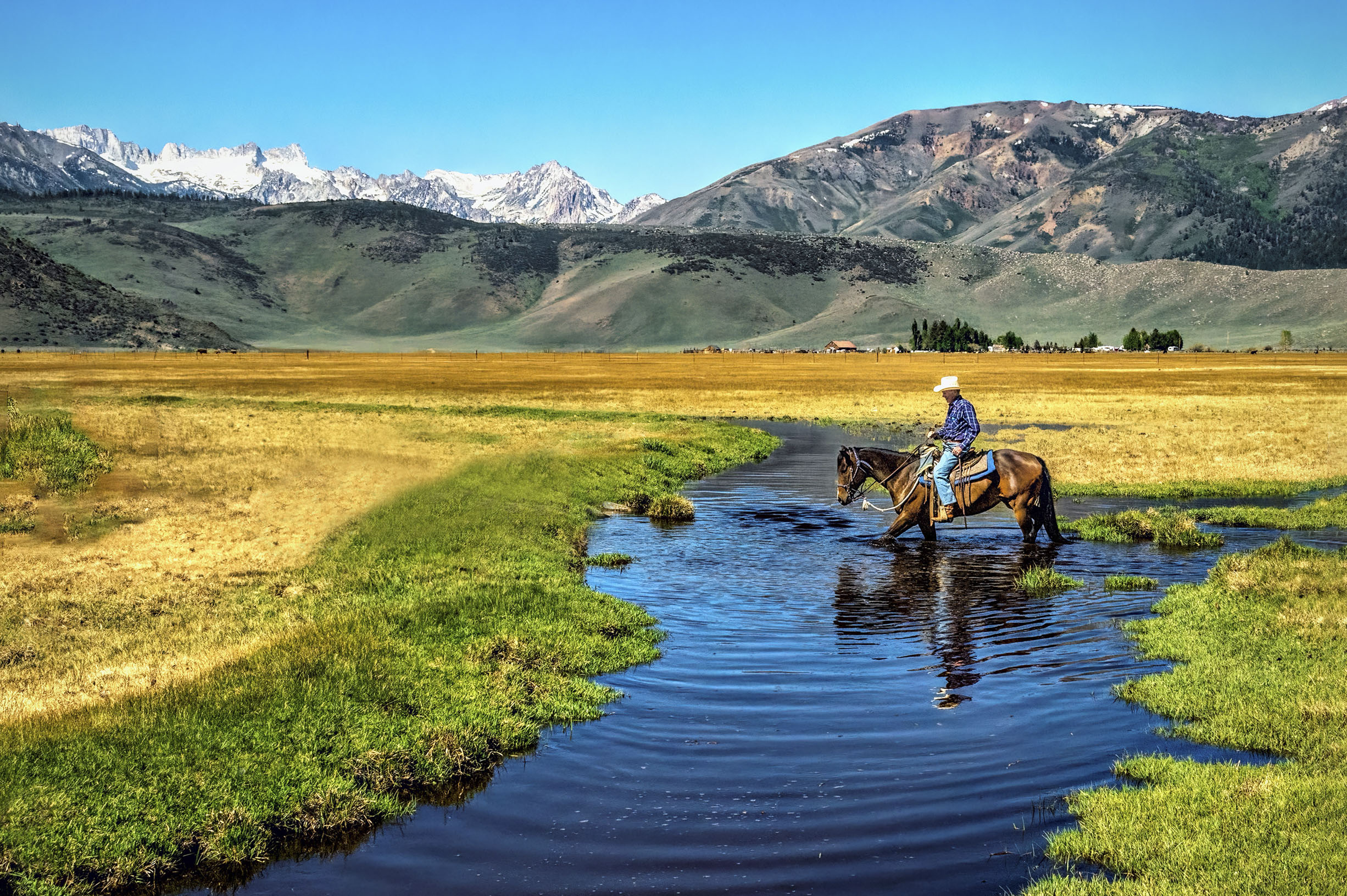While a journalism professor at the University of Wyoming when I wore a younger man’s clothes, I became close friends with a bowlegged, hardheaded cowboy. Seeing us together on the streets of Laramie, folks would holler, “Here comes the cowboy and the professor.” My city slicker self had never ridden a horse, much less herded a cow, before meeting the legendary cowboy. Since then, I have saddled many a cow pony and earned my spurs in spirited roundups across five states with him.
My first wrangling match was on a blustery, bitterly cold, snow-spitting day in early June on the Laramie high plateau. Astride a high-octane mustang, I stared out at the swarm of horns, pounding hooves, and hind ends of rust-colored cattle ramrodded by the legend. When the lead cow abruptly bolted toward open range, the champion pro rodeo bronc rider, anticipating the move, intercepted her with the aptitude of an NFL defensive back.
Whereas I had a cowpoke compadre to make me muscle sore and saddle savvy, the best path for most greenhorns hell bent for leather to rope and ride like a true buckaroo is to bunk at a dude ranch. Through the years the dude ranch concept has evolved into more types of guest ranches than wrinkles on a Brahman bull. There are working ranches, resort ranches, executive-retreat ranches, and those with scarcely a horse, a cow, or a goat to their name. Ranches for hardheaded and weak-minded wannabe cowpunchers where every waking moment is spent wrestling a steer or guzzling a beer.
Ranch for the Ages
Western cities are a short drive and a century removed from dude ranches with herds of cows instead of maddening crowds. Evoking images of the vast expanses of Wyoming and Montana, often overlooked is the rich, guest ranch tradition in California, exemplified by the Hunewill Ranch. Nestled in a cleft on the eastern slope of the Sierras at 6,500 feet in the Bridgeport Valley, its open meadow spreads out like a green mantle below snow-crusted crags bordering Yosemite.
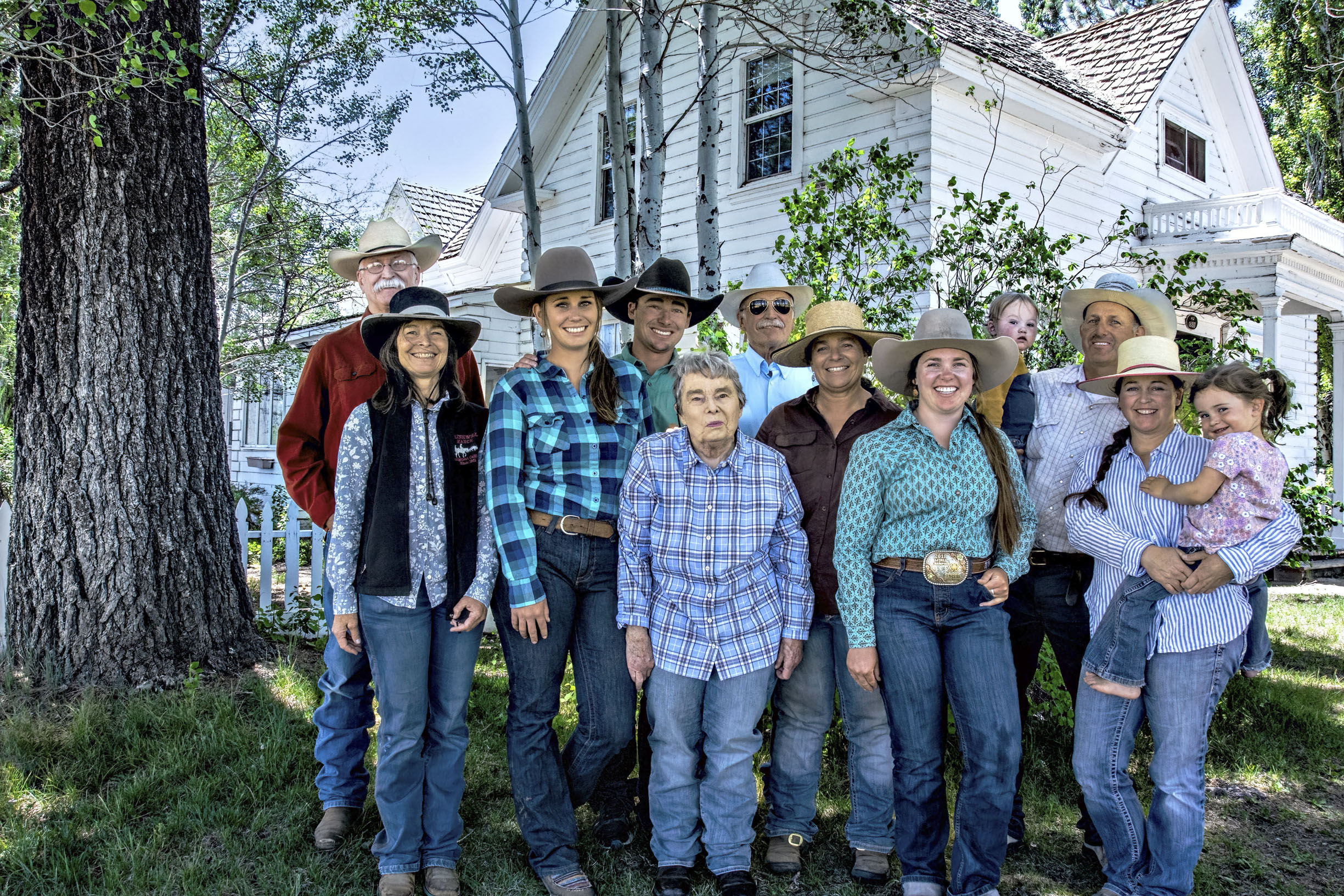
The family-owned and -operated 4,500-acre ranch has run cattle since the Civil War and hosted guests since the Great Depression. It boasts a string of 160 horses you can ride at a lope and 1,000 head of cattle you can herd on horseback—unlike most of today’s dude ranches that are more resort than rawhide. At the Circle H, the cowboy life is for real. Guests are treated with courtesy, not coddled like delicate porcelain.
Riding alongside affable and self-assured members of the ranch’s fifth and sixth generations, one can almost visualize their ancestors reflected in their faces. Ancestry and legacy are foremost in their minds. “What makes all the effort worthwhile is the family,” said 86-year-old matriarch Jan Hunewill. “Why else do it? You want to pass it on to the next generation.” And generations of guests returning year after year develop a kinship with the deeply rooted family.
“The older generation appreciates the energy, new ideas, and tech savvy-ness of the younger generation,” daughter Betsy said. “I like to think the younger generation is not afraid to ask questions of the older generation and is able to appreciate the wisdom of experience.” She runs the office; her brother, Jeff, is ranch CEO and oversees the cattle operation; her sister, Megan, heads the riding program.
The Hunewill Ranch offers four- to seven-day vacations ranging from family gatherings to ladies or adults only, for a maximum of 60 guests in 24 comfortable cabins. Stays include food and lodging, horseback riding, and evening activities such as hayrides, cookouts, and square dancing. A former Chart House seafood restaurants chef, Richard Leonin, prepares appetizing meals.
The guest ranch’s six-month season consumes the Hunewills’ lives. They all have sweat equity in taking care of the guests or the horses and cattle, according to Megan’s son, Dalton, who, like the others, often endures 16-hour days. They don’t tell the staff what to do, he maintains, but lead by example and treat them as family. With youthful enthusiasm, Seth Digman said, “I didn’t come from much and love working here. I’ll do anything they throw at me from mending fences to fixing toilets as long as they keep me around.”
Horsing Around
As a rose-tinged, ethereal dawn caresses the mountain crests, an artist’s palate of paints, bays, buckskins, and palominos with thundering hooves and steaming nostrils cascades into the corral from their overnight pasture. Rides on these hale, handsomely sculptured horses are scheduled twice a day unless an all-day excursion is planned. Guests self-select their ability level: beginner, intermediate, or advanced. “The first day of riding, there is a lot of anticipation waiting for your horse to be called—super excited, a little nervous, not sure what to expect; then, when you finally get on your horse, everything falls into place,” counseled Megan’s 18-year-old daughter Aspen, who’s been a wrangler for four years.
Children afraid of horses build their confidence and riding skills in the barnyard and then on the meadow. By the end of their visit, many can ride at a lope. They write Christmas cards to their horses and inquire on Facebook about them. When they become more accomplished riders, their siblings may inherit their horses.
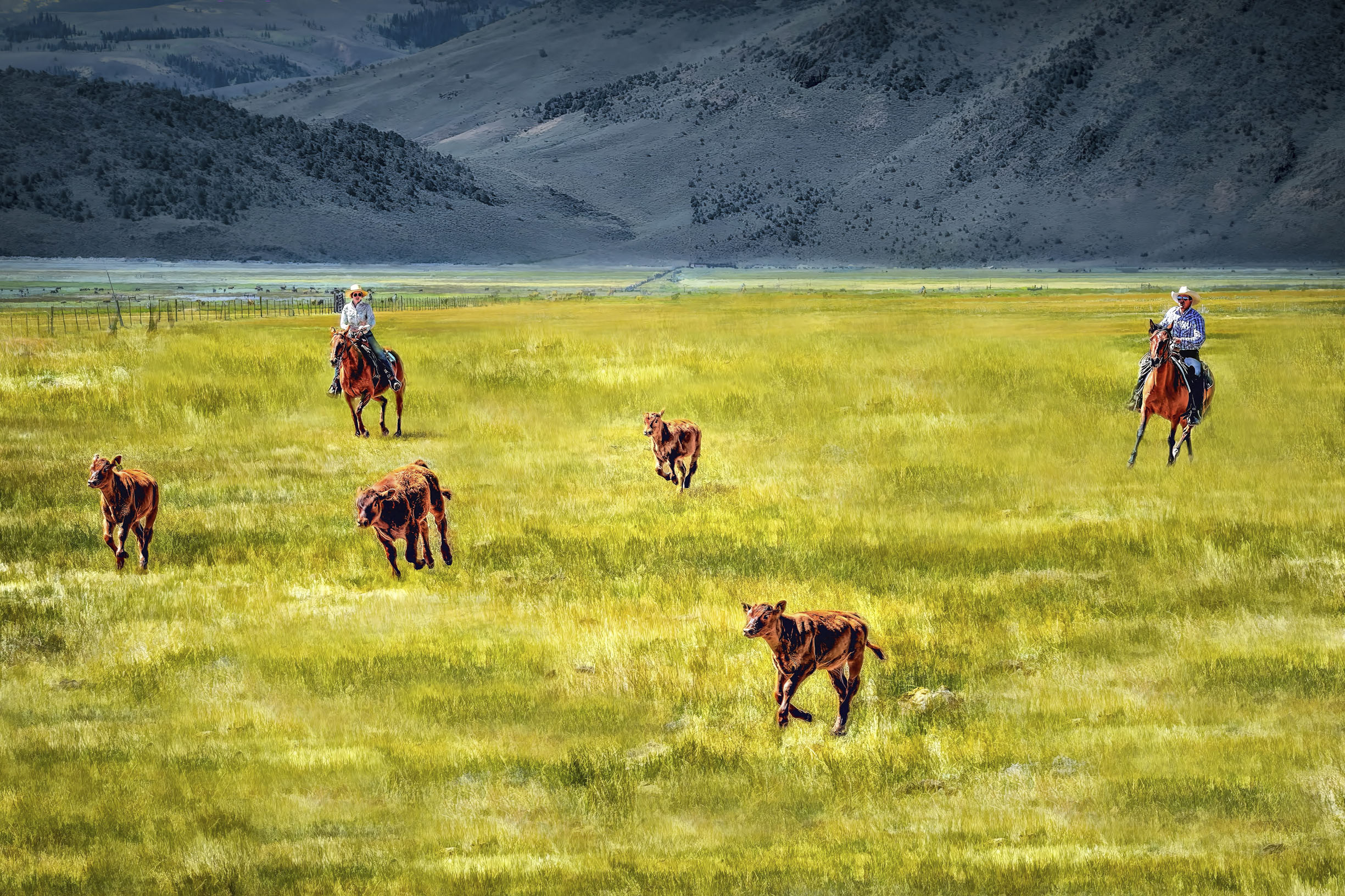
“It’s cool to see our son grow up with children who return with their families each year,” Ashley said about her and Dalton’s seventh-generation toddler, Leland. “It’s an avenue to expose a little ranch kid who doesn’t see much of the outside world to people from different backgrounds.”
The Circle H is not limited to nose-to-tail trail riding. It is high-country, boundless riding at its best: the exhilaration of loping across a 4,000-acre meadow in the shadow of the Sierras, saddled on an exuberant quarter horse, churning up sod and splashing through springs with no fence in sight. Demands of everyday life are as far off as the Milky Way.
Horse-walking in the midst of the meadow casts a magical spell as waves of wild irises shimmy in the afternoon breeze and bright clouds of butterflies flit in a winged waltz. An inner peace spreads like a comforting blanket in the zen-like stillness, broken only by the sweet song of a warbling wren.
“One of the best things about riding through the meadow is it’s always different,” Jeff’s daughter, Leslie, mused. “The light is different, the cattle are in a different place, the grass is in a different stage, the horse is different—a colt or your old faithful.”
Charismatic ranch celebrity Benny Romero, who has lived in the hearts of the Hunewills for a quarter century, entertains guests on his popular horse walks. The 78-year-old Basque from New Mexico rides with the ease of a lifetime in the saddle and spins tales with the humor of a seasoned storyteller. He recollects crossing a creek on his gelding, Delta, when two cows butted heads and started a ruckus: “One turned suddenly and struck Delta in the chest, making him swing around real hard.” He quoted Megan saying, “Benny, anybody else would have come off the horse, but you stuck on like a tick.”
Guests herd easy-to-handle Red Angus cattle under the pretense of helping out. “Women just love horses,” Megan contended, “but men like to have a job. Moving cows gives them a purpose on a horse.” Pushing them through pastures and across streams is routine, but not so through open gates where they congregate. Patient prodding and wrangler finesse breaks the impasse.
Canyon Connection
On an all-day horseback ride into Buckeye Canyon, golden shafts of sunlight filter through the tree branches, dappling the trail and underbrush, partially concealing a herd of mule deer. Stands of aspen with slender white trunks and glossy green leaves tremble in the gentle breeze, cooling the sweat on your brow. Unexpectedly, the canyon opens onto a cinematic alpine meadow and a soaring sculpted granite cathedral, cradling glistening glaciers against a cerulean sky.
Amid the majesty, guests picnic on a grassy knoll beside a stony creek. Laze in the noonday sun or under a sheltering fir as blue jays lurk overhead and chipmunks gambol about. A pair of red-tailed hawks soars above the precipitous canyon walls, and a golden eagle perched on the topmost branch of a lone pine emits piercing cries.
In 1861, Napoleon Bonaparte Hunewill established a sawmill in Buckeye Canyon to supply lumber hauled by teams of oxen to mining boomtowns and built a house for his young Maine bride. Esther likely found life difficult in the Sierra wilderness and may have screamed back at the wind howling down the canyon. She may have pined for female companionship, melodic music, and gay laughter when starlit nights fell silent. But standing shoulder to shoulder with her husband, she faced the frontier challenges head on. The ancestral fortitude survives in the strong work ethic of their college-educated progeny, illustrated by the self-reliant women in the forefront of the guest ranch and by the able-bodied men behind the scenes of the cattle operation.
The nucleus of the Hunewill Ranch is the barn raised two decades later in the Bridgeport Valley. Built with pegs, not nails, it is a fine example of late-19th-century craftsmanship. The pungent smell of horse sweat, aged leather, and stacked saddle blankets permeates the dim interior. A family of great horned owls roosts in the cool recesses of the high, shadowy beams.
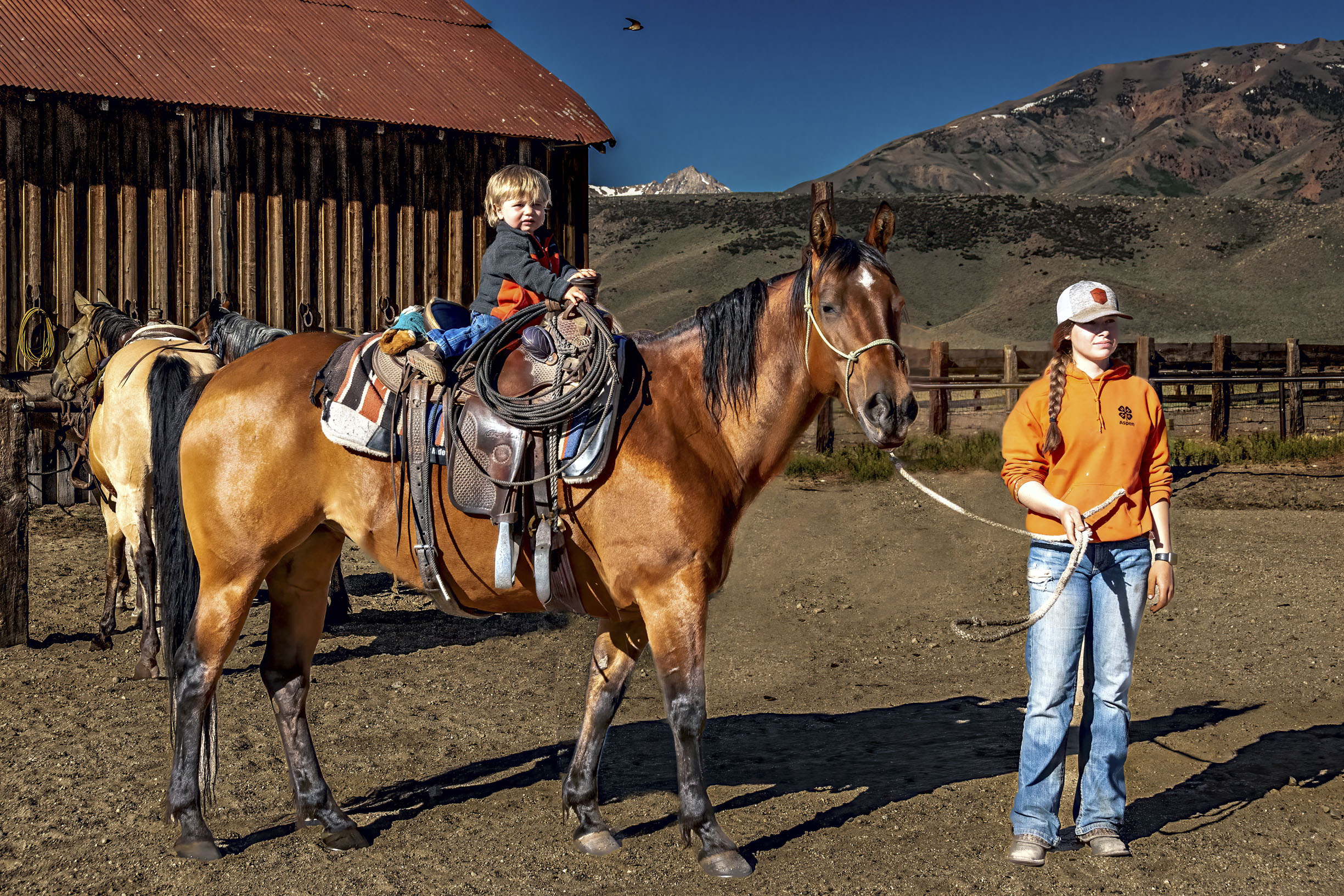
The graceful, white Victorian ranch house was constructed in 1880 with timber from the canyon. The furniture in the parlor was shipped from San Francisco, including the heirloom Steinway that rounded Cape Horn and was played by daughter-in-law Alice, who graduated from the New England Conservatory of Music. A remodeled portion of the house serves as the family and guest kitchen and dining room.
The Hunewills retain memories of a carefree childhood playing in the hayloft of the barn and the currant patch near the house, swimming in the creek, and riding across the meadow. “My sister, Rhiannon, and I would ride our horses to our favorite fishing hole and ride back with fish flopping on the side of our saddles,” Aspen recalled. “It was kind of gross. We cleaned them and gave them to the cook, who I think threw them away.”
Land Stewards and Cattle Connoisseurs
The cash flow from the guest side makes it possible for family members to stay on the ranch. They directly communicate with each other in a weekly meeting. “We have to work together, talk things out in a civilized manner,” Megan said. “It makes it easier that we like each other and what we do.”
Jeff recently secured a conservation easement, safeguarding the ranch from development. “There’s a lot of habitat that’s being protected,” said Eastern Sierra Land Trust Executive Director Kay Ogden in late 2020. “That land is in their DNA. They’ve owned it so long—they are incredible stewards of the land.” Jeff recognizes that balancing the intricacies of livestock, wildlife, and natural resources is integral to such stewardship.
Leslie’s niche is keeping records of the cattle. “I can talk about cows all day long,” she said with a twinkle. “If you ask me about number 99 with a red ear tag, I can tell you how she performs and give you her entire history. My brain is a mental filing system.”
During the traditional cattle drive complete with chuck wagon in early November, stalwart guests act as drovers accompanying the Hunewills for five days to move 600 cattle over the same route followed for more than a century—60 miles from the Bridgeport ranch to the lower Nevada range. “We cannot stay at Bridgeport in the winter as there is a lot of snow and the temperature drops to minus 34 degrees like in Montana,” Jeff said. The drive’s bone-chilling temperatures and high gusty winds induce the wranglers to doff their Stetsons for warm and snug headdress. Everyone returns to the cozy comfort of the ranch at day’s end.
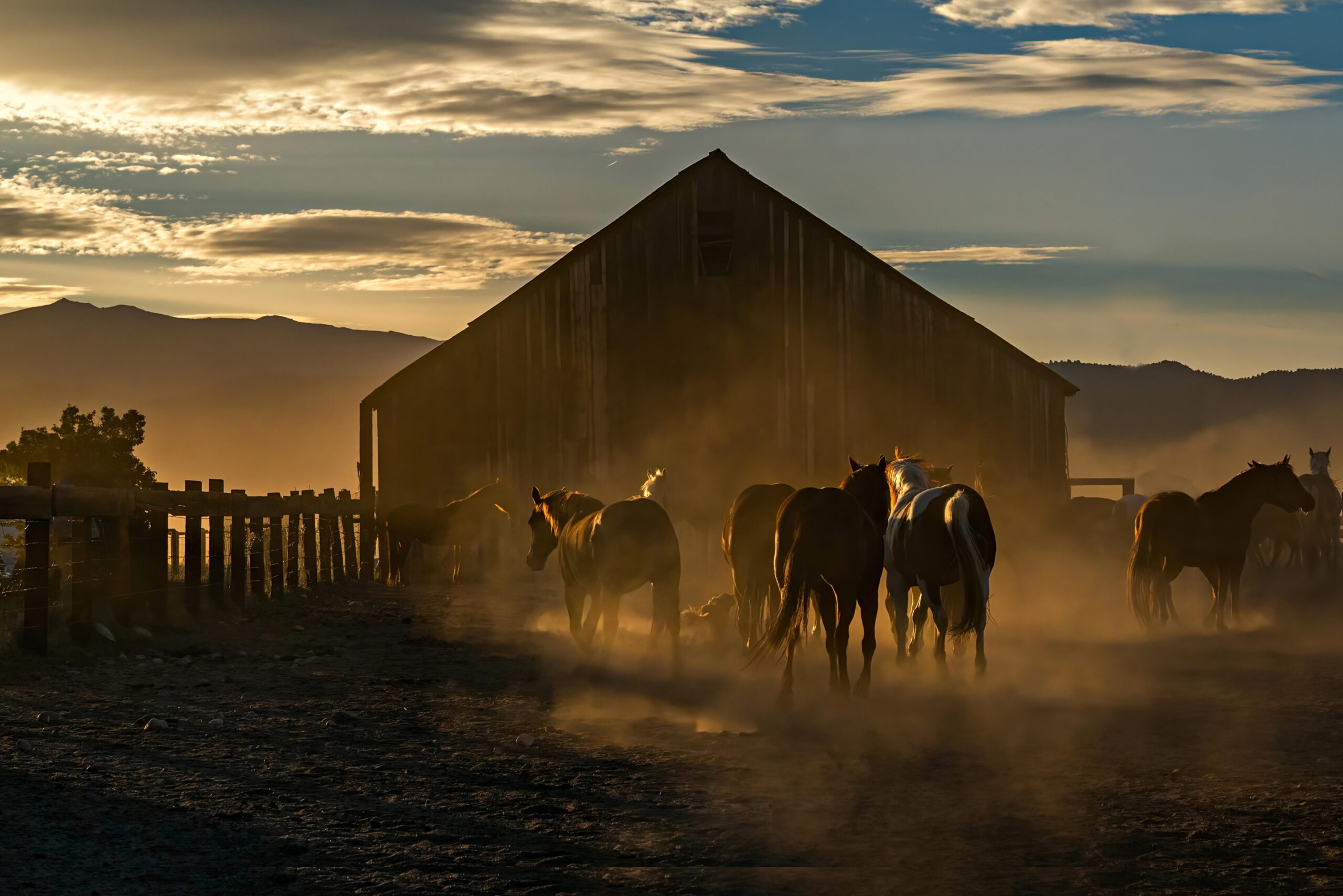
Reality and Romance
Planning for posterity, the Hunewills have investments outside the ranch. “There was a time when I was young that we sold all the cows to get out of a financial hole,” Megan said. “Cows are liquid assets; we did not have to sell the land.” This reminded me of my first roundup on that bleak, Wyoming day. My first was the fifth generation ranch family’s last. I’ll never forget the heartbreak and the dread in their eyes, wondering what they’d do with their lives.
The reality and romance of the Hunewill Ranch are intertwined. Cowboys hurtle across creek beds without breaking stride and communicate to each other without speaking a word as they ride. Guests straddle a saddle for a week, making a lifetime memory and a mental snapshot of the serenity and natural splendor. “Many of our older ladies like to get out to enjoy the sounds of the creek and the birds and to look at the mountains in the background,” teenage Aspen said, smiling. Years from now, if the offspring play their cards right, her great-grandchildren will take the matriarch for creek-side rides on the ninth-generation Hunewill Ranch.
This article was originally published in American Essence magazine.

